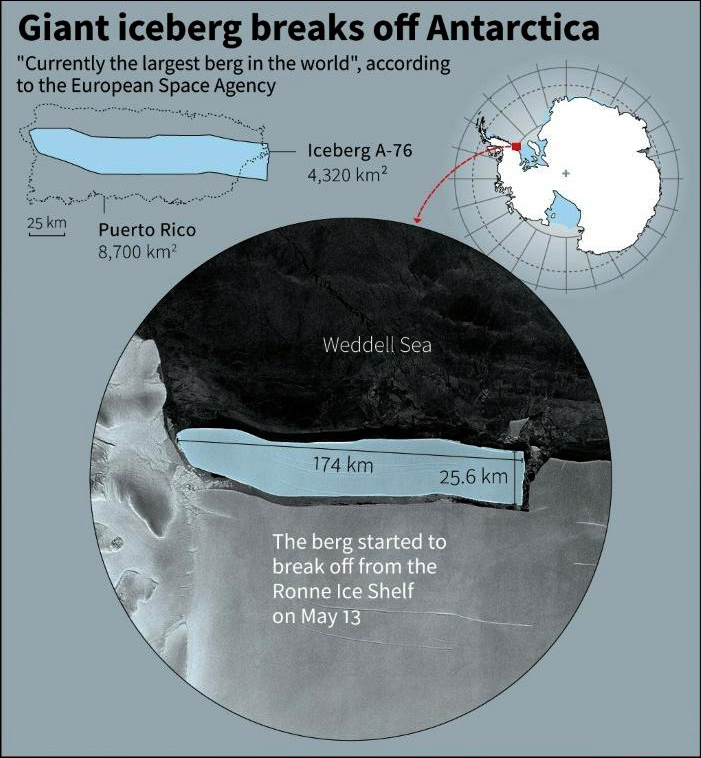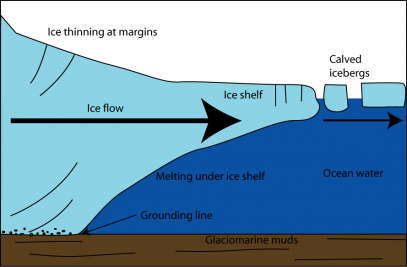A-76: World’s Largest Iceberg | 21 May 2021
Why in News
An enormous iceberg 'A-76' has calved from the western side of the Ronne Ice Shelf, lying in the Weddell Sea, in Antarctica.
- It measures around 4320 sq km in size – currently making it the largest berg in the world.
Key Points
- About A-76:
- The newly calved berg 'A-76' was spotted in recent satellite images captured by the Copernicus Sentinel-1 mission.
- Sentinel-1 is one of the missions of the European Space Agency (ESA) under Copernicus initiative (an earth observation programme).
- It has surpassed the now second-place A-23A, about 3,380 sq km in size and also floating in the Weddell Sea.
- The newly calved berg 'A-76' was spotted in recent satellite images captured by the Copernicus Sentinel-1 mission.
- Iceberg:
- An iceberg is ice that broke off from glaciers or shelf ice and is floating in open water.
- Icebergs travel with ocean currents and either get caught up in shallow waters or ground themselves.
- The US National Ice Center (USNIC) is the only organisation that names and tracks Antarctic Icebergs.
- Icebergs are named according to the Antarctic quadrant in which they are spotted.
- Ice Shelves:
- An ice shelf is a floating extension of land ice. The Antarctic continent is surrounded by ice shelves.
- The Ronne Ice Shelf on the flank of the Antarctic Peninsula is one of the largest of several enormous floating sheets of ice that connect to the continent's landmass and extend out into the surrounding seas.
- Iceberg Calving:
- Meaning:
- Calving is the glaciological term for the mechanical loss (or simply, breaking off) of ice from a glacier margin.
- Calving is most common when a glacier flows into water (i.e. lakes or the ocean) but can also occur on dry land, where it is known as dry calving.
- Recent Cases of Calving:
- Up to the end of the 20th century, the Larsen Ice Shelf (on the West Antarctic Peninsula) had been stable for more than 10,000 years.
- In 1995, however, a huge chunk broke off, followed by another in 2002.
- This was followed by the breakup of the nearby Wilkins Ice Shelf in 2008 and 2009, and A68a in 2017.
- Up to the end of the 20th century, the Larsen Ice Shelf (on the West Antarctic Peninsula) had been stable for more than 10,000 years.
- Meaning:
- Concerns:
- Periodic calving off of large chunks of those shelves is part of a natural cycle, but the process has been accelerated by climate change.
- Average sea levels have risen about nine inches since 1880, and about a quarter of that increase comes from ice melting in the Greenland and Antarctica ice sheets, along with land-based glaciers elsewhere.
- According to a recent study, more ambitious national goals to cut greenhouse gas emissions and slow down climate change set recently are not enough to stop sea levels from rising.
- In fact, melting glaciers and ice sheets will raise sea levels twice as fast as they would if countries fulfilled their earlier pledges under the Paris Agreement.


